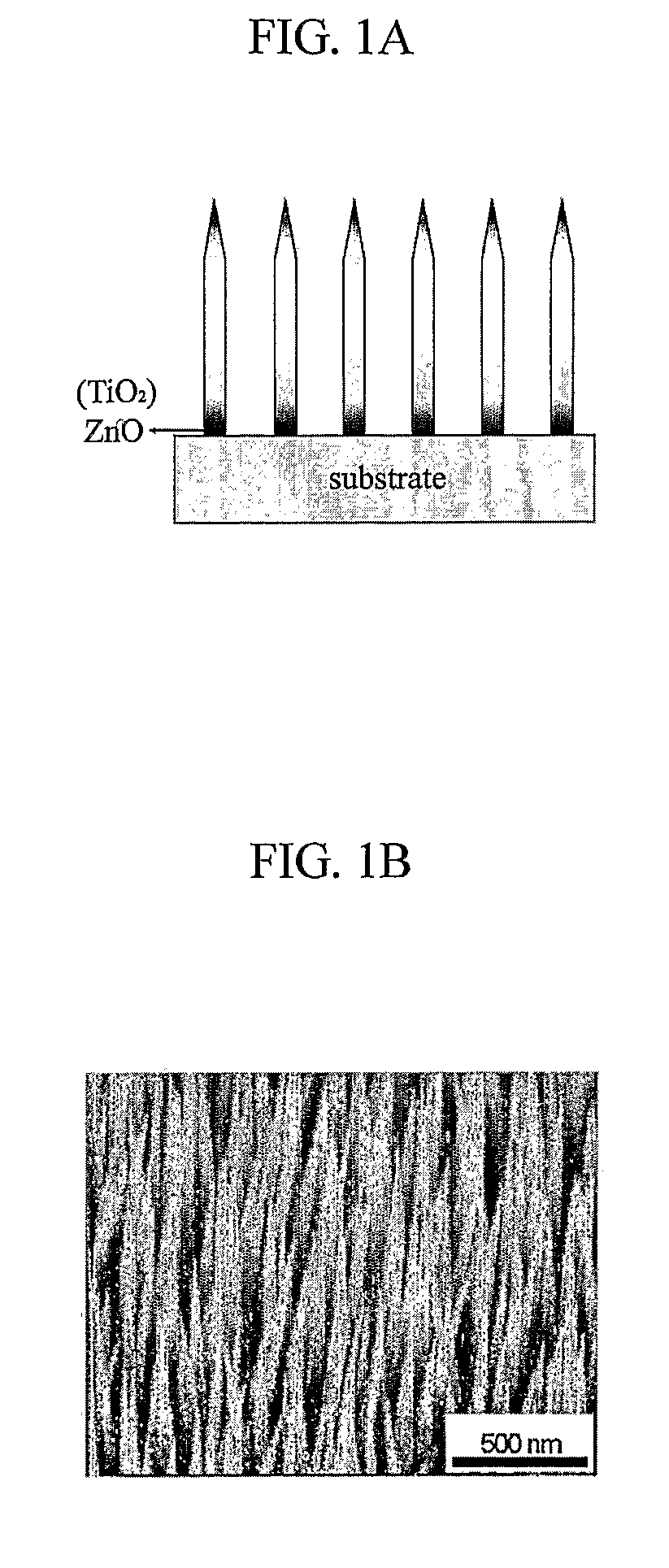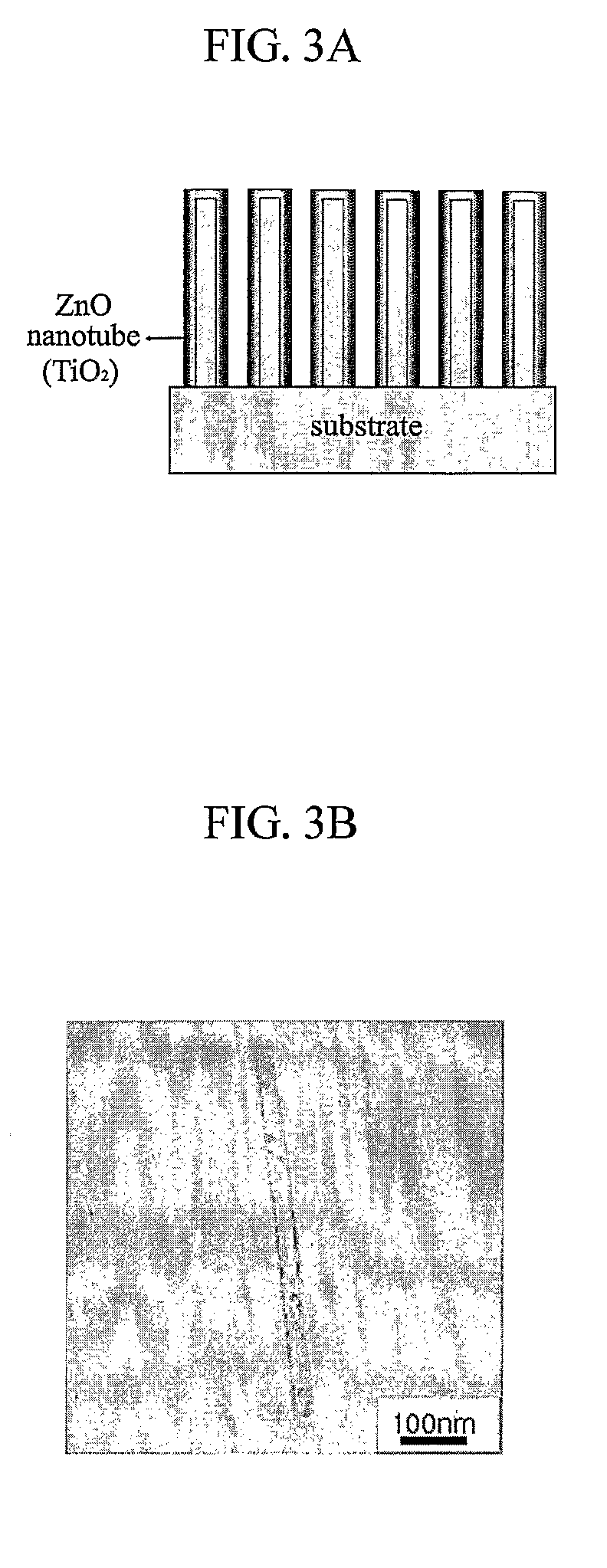Photocatalyst including oxide-based nanomaterial
- Summary
- Abstract
- Description
- Claims
- Application Information
AI Technical Summary
Benefits of technology
Problems solved by technology
Method used
Image
Examples
example 1
Production of a Photocatalyst Including ZnO Nanoneedles
[0060] A glass substrate was put in a metal-organic chemical vapor deposition (MOCVD) reactor, and dimethylzinc (Zn(CH3)2) and O2 gas were fed through separate lines into the reactor at rates of 0.1-10 sccm and 10-100 sccm, respectively. Argon (Ar) was used as carrier gas.
[0061] An inside of the reactor was maintained at a pressure of 0.2 torr and a temperature of 500□ for 1 hour to chemically react dimethylzinc and oxygen on the glass substrate, thereby growing and depositing the ZnO nanoneedles.
[0062] As a result, each of the ZnO nanoneedles vertically oriented on the glass substrate had a diameter of 60 nm, a length of 1□, and a density of 1010 / cm2.
example 2
Production of TiO2 Nanorods
[0073] A metal-organic chemical vapor deposition (MOCVD) device was used, titanium isopropoxide (TIP, Ti(OC3H7i)4) and O2 were used as reactants, and argon (Ar) was used as a carrier gas.
[0074] TIP and O2 were fed through separate lines into a reactor. The pressure and temperature in the reactor were maintained at 0-100 mmHg and 300-700□, respectively. Flow rates of the reactants were controlled to be 40 sccm for argon, 20-40 sccm for TIP, and 20-40 sccm for O2, and growth was conducted for about 1 hour.
example 3
Production of TiO2 / ZnO Coaxial Doublewall Nanorods Using MOCVD
[0075] After ZnO nanorods were produced through a procedure similar to example 1 (see a SEM picture of FIG. 8a), the ZnO nanorods thus produced were put in a metal-organic chemical vapor deposition (MOCVD) device, and TIP and O2 were fed through separate lines into a reactor.
[0076] The pressure and temperature in the reactor were maintained at 0-100 mmHg and 300-700□, respectively. Flow rates of the reactants were controlled to be 40 sccm for argon, 20-40 sccm for TIP, and 20-40 sccm for O2, and the TiO2 / ZnO coaxial doublewall nanorods were grown for about 1-10 min. SEM pictures of the resulting products are shown in FIGS. 10b to 10d. From the pictures, it can be seen that it is possible to adjust the diameters of the TiO2 / ZnO coaxial doublewall nanorods by controlling the growth time.
PUM
| Property | Measurement | Unit |
|---|---|---|
| Diameter | aaaaa | aaaaa |
| Diameter | aaaaa | aaaaa |
| Length | aaaaa | aaaaa |
Abstract
Description
Claims
Application Information
 Login to View More
Login to View More - Generate Ideas
- Intellectual Property
- Life Sciences
- Materials
- Tech Scout
- Unparalleled Data Quality
- Higher Quality Content
- 60% Fewer Hallucinations
Browse by: Latest US Patents, China's latest patents, Technical Efficacy Thesaurus, Application Domain, Technology Topic, Popular Technical Reports.
© 2025 PatSnap. All rights reserved.Legal|Privacy policy|Modern Slavery Act Transparency Statement|Sitemap|About US| Contact US: help@patsnap.com



